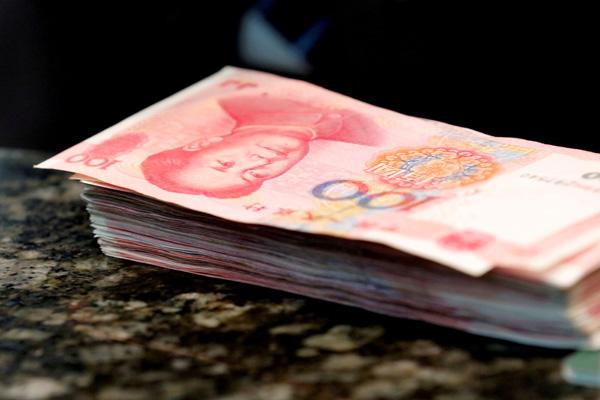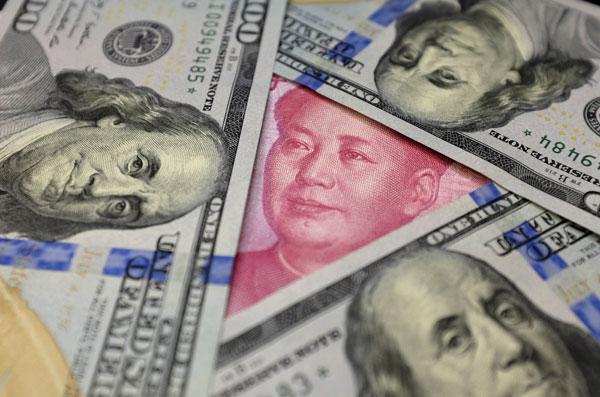You are here
Chinese yuan drops to a six-year low
By AFP - Oct 10,2016 - Last updated at Oct 10,2016

Chinese 100 yuan banknotes are seen on a counter of a branch of a commercial bank in Beijing, China, March 30, 2016 (Reuters photo)
SHANGHAI — China's central bank set the yuan's central parity rate weaker than 6.7 to the dollar for the first time in six years on Monday, the first day of trading after it joined the IMF's "special drawing rights" reserve currency basket.
The currency has been declining for months in the face of a globally stronger dollar, slowing growth in the Chinese economy, and capital outflows from the world's second-largest economy.
China's authorities have repeatedly pledged to liberalise trading in the unit, also known as the renminbi, but still keep a tight rein on it, only allowing it to rise or fall 2 per cent on either side of a daily fix on the national foreign exchange market.
On Monday the People's Bank of China lowered the central rate by 230 basis points from the previous trading day to 6.7008, its weakest since 2010.
Chinese markets were closed all last week for national holidays, during which the dollar's performance was "quite strong", Lu Zhengwei, chief economist at Industrial Bank told AFP.
"I believe today's slump is a response to the strong dollar during the holiday."
Monday was the first trading day in China since the yuan joined the dollar, pound, yen and euro in the IMF's "special drawing rights" reserve currency basket on October 1, after a decision last year.
The move, long pressed for by Beijing as it seeks to increase the yuan's role in global markets, brings with it symbolic prestige but has limited direct impact, analysts say.
Zhang Qun, an analyst at Citic Securities, said the currency's value was increasingly dependent on China's economic fundamentals, adding: "In the medium and long term, the yuan will continue to depreciate at a steady, slow pace."
The Asian giant's economy expanded only 6.9 per cent in 2015 — its weakest rate in a quarter of a century — and has slowed further this year.
In August of last year, Beijing suddenly devalued the yuan, causing investors to dump the currency in volumes not seen since 1994 and sparking an outflow of capital from China. The yuan has fallen 8 per cent against the US dollar over the last two years.
Strong US economic data released in September and heightened market expectations that the US Fed will raise interest rates in December have also caused short-term pressure on the yuan, analysts said.
Related Articles
SHANGHAI — China on Friday raised the exchange rate for the yuan against the US dollar by 0.92 per cent from the previous day, the biggest o
BEIJING — China's yuan joins the International Monetary Fund's (IMF) basket of reserve currencies on Saturday in a milestone for the governm
NEW YORK — The dollar, yen and Swiss franc rose on Tuesday as traders piled into perceived less risky currencies after US President Donald T














